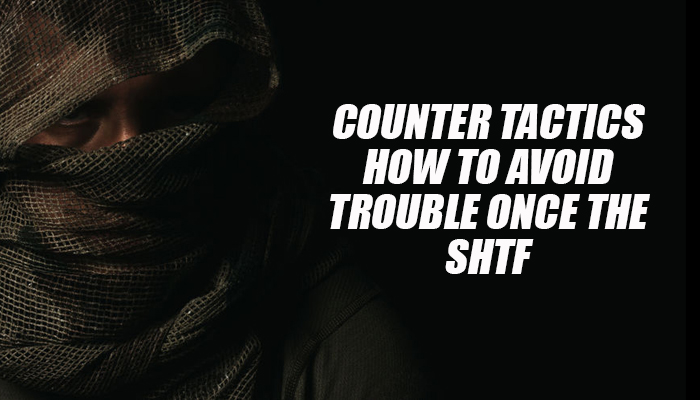
People tend to want to go on the offensive when they are scared or are convinced someone or some group is out to get them. If you are in a military unit then offensive and defensive strategies are a part of life. Orders come down to defend your position or to take a position currently occupied by the enemy.
In the civilian world, you are mainly in a defensive position. Your home has alarm systems, fences, walls or other barriers designed to keep people out or to let you know someone is snooping about. You are not roaming the countryside attacking others in their home. No, you are home waiting to defend your family and possessions, essentially waiting for someone to start something so you can counter their attack.
Once the SHTF, until you know otherwise, everyone or every group you encounter is a potential enemy out to invade your territory, which could be your home, compound, or section of land you have staked after evacuating an urban area.
You will normally be in a defensive posture until attacked and then you can counter attack if you have the means, and thus, put the opponent on the defensive. To avoid casualties and to mount a proper counter attack, you need information, and a force big enough to be successful.
Obviously, the best way to stay alive and to avoid firefights is to not offer up a reason for anyone to attack. You have to set the groundwork early, long before something happens. Keep your business between you and family only. Do not advertise you are prepared by bragging in the coffee shops and at gun ranges. If everyone in the county knows you have a stockpile of food, water, and Ammo and are ready for anything, of course, you will be a target.
When the SHTF the things you do can make or break you, so first assume an attack is possible, and assume people are watching and waiting for an opening.
Know the area you are defending first and foremost. Know the hiding places. You need to know where someone attacking the home can seek cover, and where you can seek cover if you launch a counter attack.
Know distances, for example, how far from your front door to the end of the driveway, to the mailbox, and to that large oak tree in the middle of the field. Know your firearm’s capabilities at the marked ranges, and know your own capabilities and of those helping you.
Do not gather in a group anywhere outside of adequate cover and/or concealment.
Never open any doors to the outside when there is a light on behind you. Always turn the light off before opening any doors to the outside. Cover windows so silhouettes cannot be seen if there is a light on in the room. The best method is to leave lights off or turn the lights off when entering a room and then look out windows to scan the ground.
Do not establish any patterns by going to the barns, or walking the grounds at the same time each day. Stay in the shadows at night, and never walk under or near any outdoor lighting. You need an escape route, one that allows you to get clear of the structure into the woods, under cover or to seek concealment outside the home.
You may have to come out a basement window, drop out of a back window or even crawl under the home to a covered corner of the house.
Simply put, if you cannot be seen, you probably cannot be shot unless someone wants to waste ammunition like in the movies and just sends hundreds or thousands of rounds into the home without having acquired a target. This is not likely to happen, however.
If fired upon your immediate reaction should be to move to cover as you deploy your firearm. Standing in the same spot to return fire will get you killed. Moving targets are harder to hit, as are smaller targets. Crouch, kneel or lay on the ground if cover is not available.
To move to cover you need to know where the cover is relative to your position. As we stated earlier, you need to know the area you are protecting. You need to know is so well that you can move about in the dark without creating noise or injuring yourself.
If you suspect snipers may be used, then you need to identify possible positions, however, there are many variables to consider. Would a likely sniper be military trained, and if so, then they are trained in bushcraft, camouflage, and they are likely positioned at a greater distance, and of course, they have patience.
Snipers will look for positions that maximize their cover but are within the effective range of their weapon. They will take the weather, terrain and the target into consideration when looking for a position. They could be 300 meters out or only 50 meters out.
A civilian shooter with just a basic understanding of their firearm may move constantly looking for an ideal shot or position. This will give them away, and they may not spend much time on concealing their position by using natural camouflage because of the fact they will move around.
Law enforcement snipers do not camouflage their positions well either, because they may know that the target cannot return effective fire at the range they set out at, or they have ample backup to protect their shooting position. A lone sniper, however, needs to be hidden and stay hidden until the target has been acquired and taken down.
A trained sniper always gets into position undetected and they have a plan to get out undetected regardless of the successfulness of the mission. Snipers generally do not shoot into the sun but you cannot count on this.